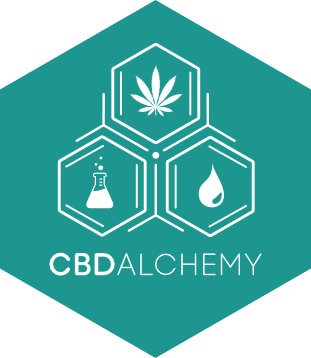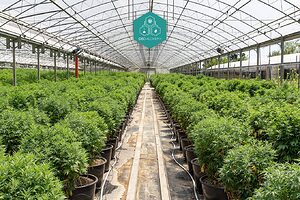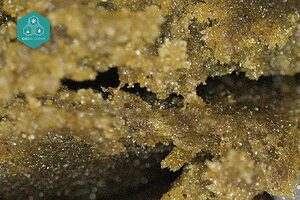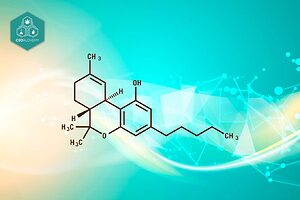- Introduction
- The Science of Flavonoids
- Biological Activities and Mechanisms
- Cell Signaling and Molecular Mechanisms
- Health Benefits and Clinical Applications
- Cannabis Flavonoids: Nature’s Hidden Therapeutic Compounds
- Therapeutic Mechanisms
- Traditional Flavonoids Present in Cannabis
- The Enhanced Entourage Effect
- Clinical Applications and Research
- Bioavailability and Absorption Optimization
- Clinical Applications
- Safety and Interaction Considerations
- Implementation Guidelines
- Future Perspectives and Emerging Research
- Practical Recommendations
- CBD Alchemy Product Selection Guide
- Expert Tips and Best Practices
- Conclusion and Future Outlook
- Flavonoid FAQs: Everything You Need to Know
- Research Studies Overview
Introduction
Flavonoids represent one of nature’s most remarkable classes of bioactive compounds, playing crucial roles in both plant health and human wellness. These versatile molecules, found abundantly in fruits, vegetables, herbs, and notably in cannabis flowers, have emerged as key players in the pursuit of natural health solutions. As research continues to unveil their potential, understanding these powerful compounds becomes increasingly important for anyone interested in optimizing their health naturally.
The Science of Flavonoids
Chemical Structure and Classification
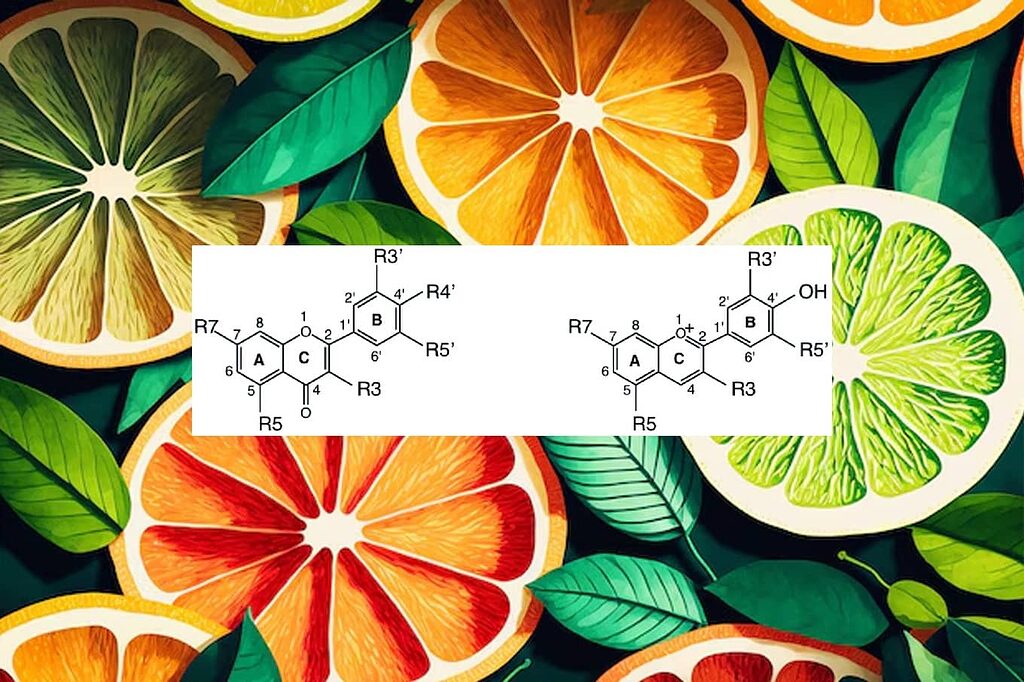
At their core, flavonoids possess a fifteen-carbon skeleton arranged in two aromatic rings connected by a three-carbon bridge. The chemical composition of these compounds, denoted as C6-C3-C6, serves as the foundation for over 6,000 identified flavonoid variants. Some flavonoids are characterized as a colorless liquid, which contributes to their diverse physical properties and applications. The diversity in their structure contributes to their wide range of biological activities and health benefits.
The main classes include:
Flavonols
- Most common in nature
- Include quercetin, kaempferol, and myricetin
- Found abundantly in onions, kale, and berries
- Known for strong antioxidant properties
Flavones
- Include apigenin and luteolin
- Present in parsley, celery, and cannabis
- Demonstrate significant anti-inflammatory effects
- Show promising neurological benefits
Flavanones
- Concentrated in citrus fruits
- Include hesperidin and naringenin
- Known for cardiovascular benefits
- Show strong antioxidant activity
Biosynthesis and Natural Occurrence in Citrus Fruits
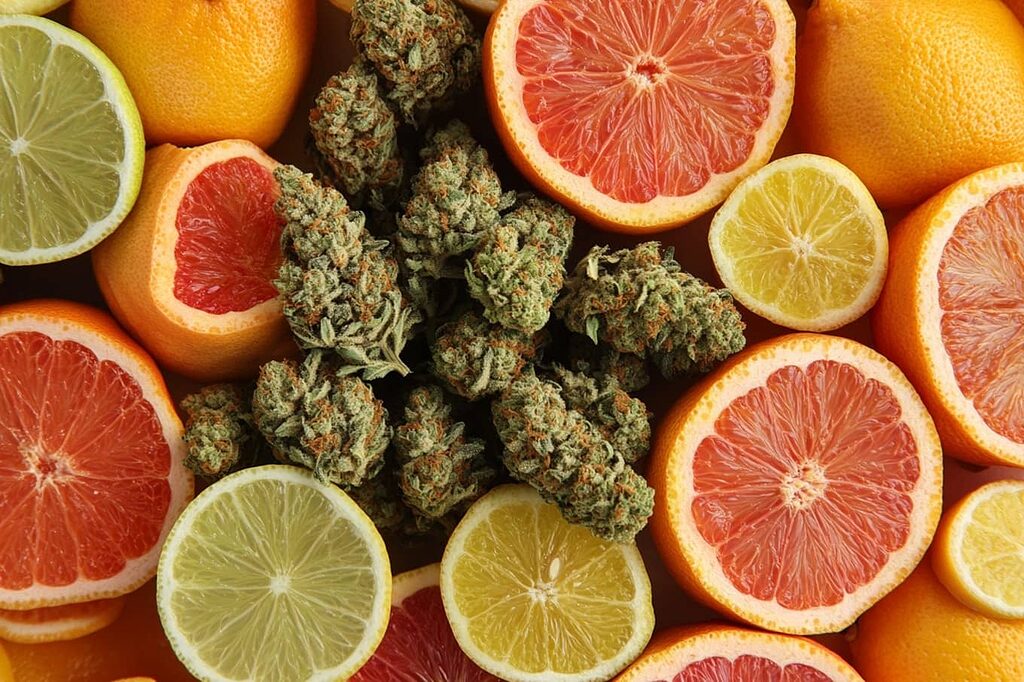
Plants synthesize flavonoids through the phenylpropanoid pathway, a complex series of enzymatic reactions that convert simple amino acids into these sophisticated compounds. Environmental factors significantly influence their production:
- Light exposure affects concentration and composition
- Temperature influences synthesis rates
- Soil conditions impact overall production
- Stress factors can increase flavonoid content
Pharmacokinetics and Metabolism of Flavonoids
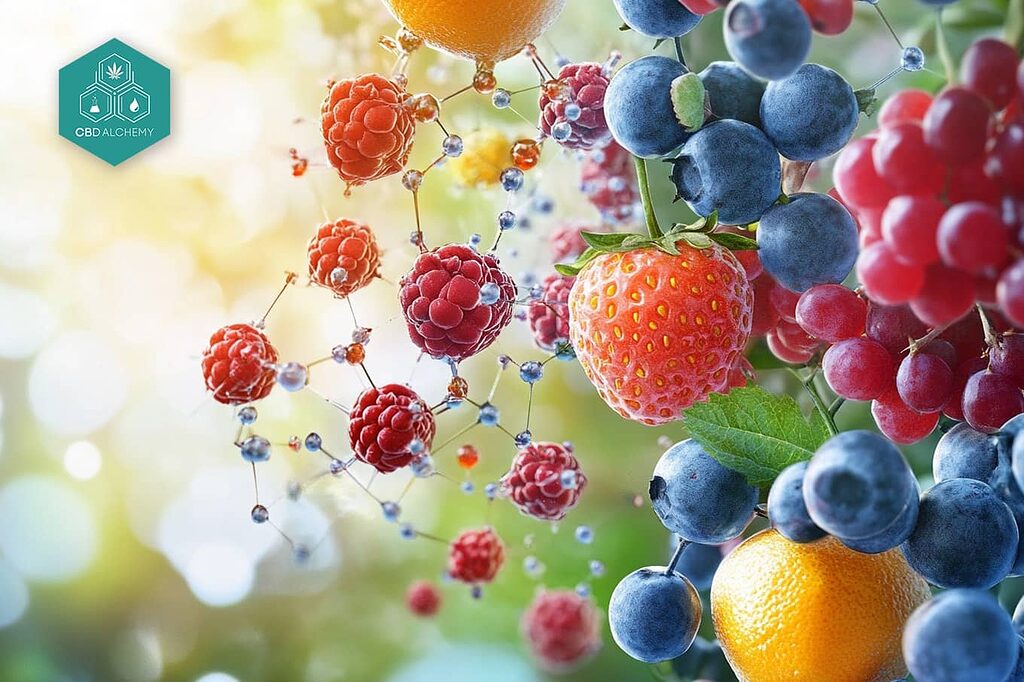
Flavonoids, renowned for their antioxidant and anti-inflammatory properties, undergo a complex journey within the human body. Upon ingestion, these phenolic compounds are absorbed in the small intestine, where they encounter various enzymes and transporters that facilitate their entry into the bloodstream. Key players in this process include cytochrome P450 and UDP-glucuronyltransferase, which initiate the metabolism of flavonoids.
Once absorbed, flavonoids are transported to the liver, a central hub for further metabolism. Here, they are transformed into various metabolites, which are then excreted from the body. The bioavailability of flavonoids, or the extent to which they are absorbed and utilized, is influenced by several factors. These include the specific type of flavonoid, the dose consumed, and the presence of other nutrients that may enhance or inhibit their absorption.
Understanding the pharmacokinetics and metabolism of flavonoids is crucial for optimizing their health benefits. By considering these factors, we can better harness the anti-inflammatory properties of flavonoids to support overall wellness.
Biological Activities and Mechanisms
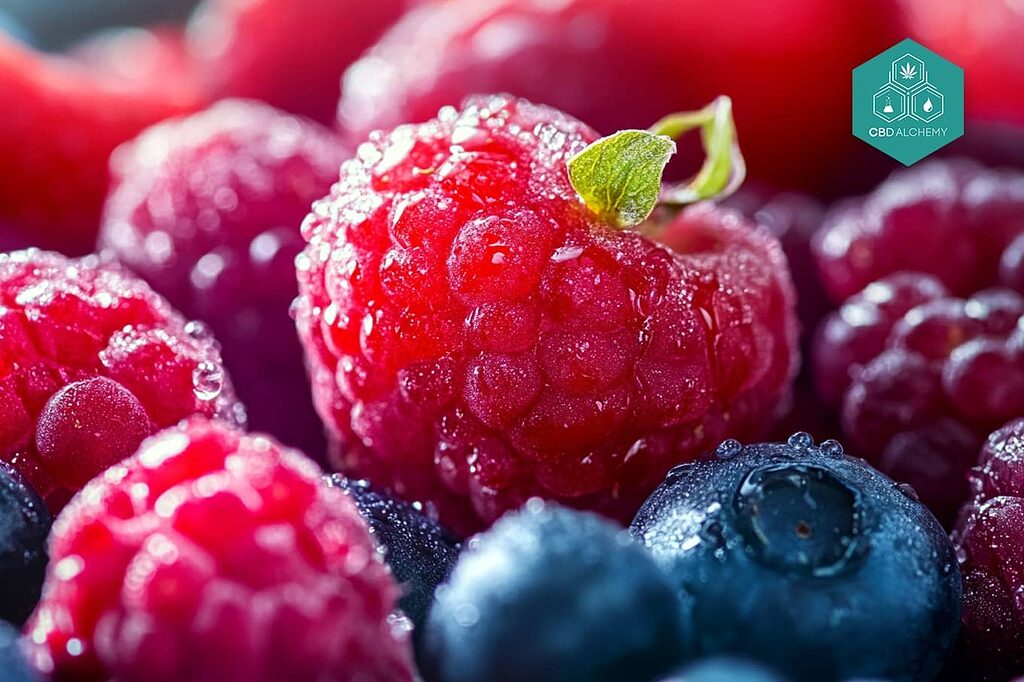
Antioxidant Properties
Flavonoids exhibit powerful antioxidant effects and capabilities through multiple mechanisms:
Direct Free Radical Scavenging
- Neutralize harmful reactive oxygen species
- Prevent oxidative damage to cells
- Protect DNA from oxidative stress
- Support cellular repair mechanisms
Metal Ion Chelation
- Bind potentially harmful metal ions
- Prevent metal-catalyzed free radical formation
- Reduce oxidative damage potential
- Support cellular homeostasis
Cell Signaling and Molecular Mechanisms
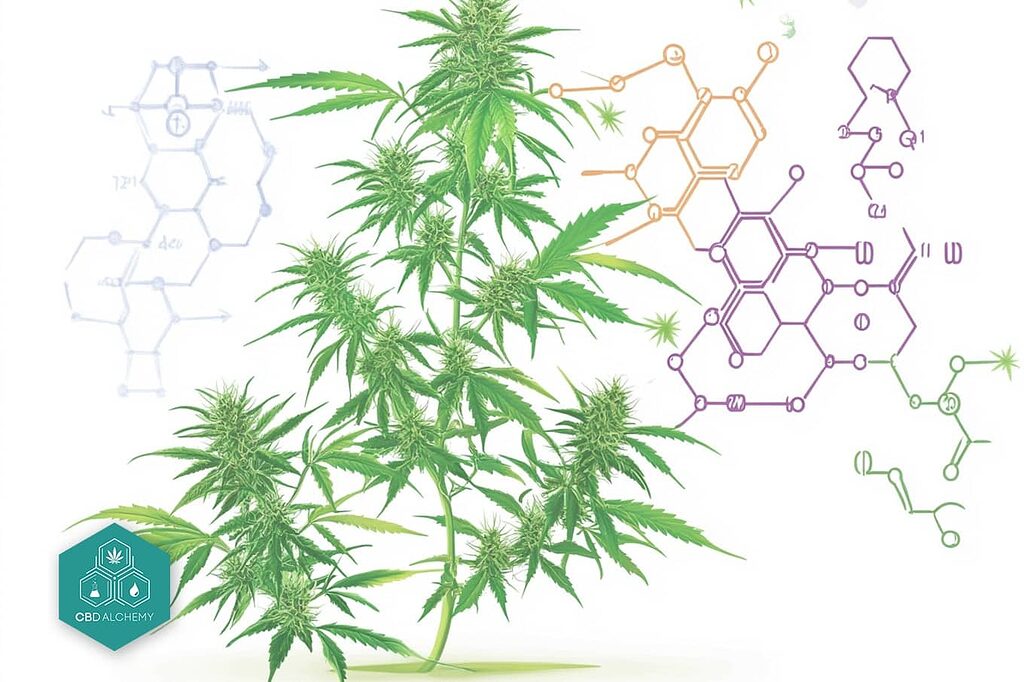
Signal Transduction Pathways
Flavonoids demonstrate remarkable abilities to modulate cellular signaling cascades, influencing various physiological processes:
Protein Kinase Regulation
- Modulation of MAP kinases
- Influence on cell cycle progression
- Regulation of inflammatory mediators
- Control of apoptotic pathways
Gene Expression Modification
- Epigenetic regulation
- Transcription factor modulation
- Anti-inflammatory gene activation
- Antioxidant response element activation
Anti-inflammatory Effects
The anti-inflammatory properties of flavonoids operate through multiple pathways:
Inflammatory Mediator Suppression
- Reduction of pro-inflammatory cytokines
- Inhibition of COX-2 expression
- Modulation of NF-κB pathway
- Regulation of prostaglandin synthesis
Additionally, various plant oils, such as those derived from citrus and mint, contain bioactive compounds like limonene and myrcene, which are noted for their potential chemopreventive and anti-inflammatory properties.
In addition to their anti-inflammatory effects, flavonoids also possess significant antibacterial properties, which contribute to their role in promoting health and preventing disease.
Immune System Modulation
- T-cell response regulation
- Macrophage activity modification
- Cytokine balance optimization
- Enhanced immune surveillance
Health Benefits and Clinical Applications
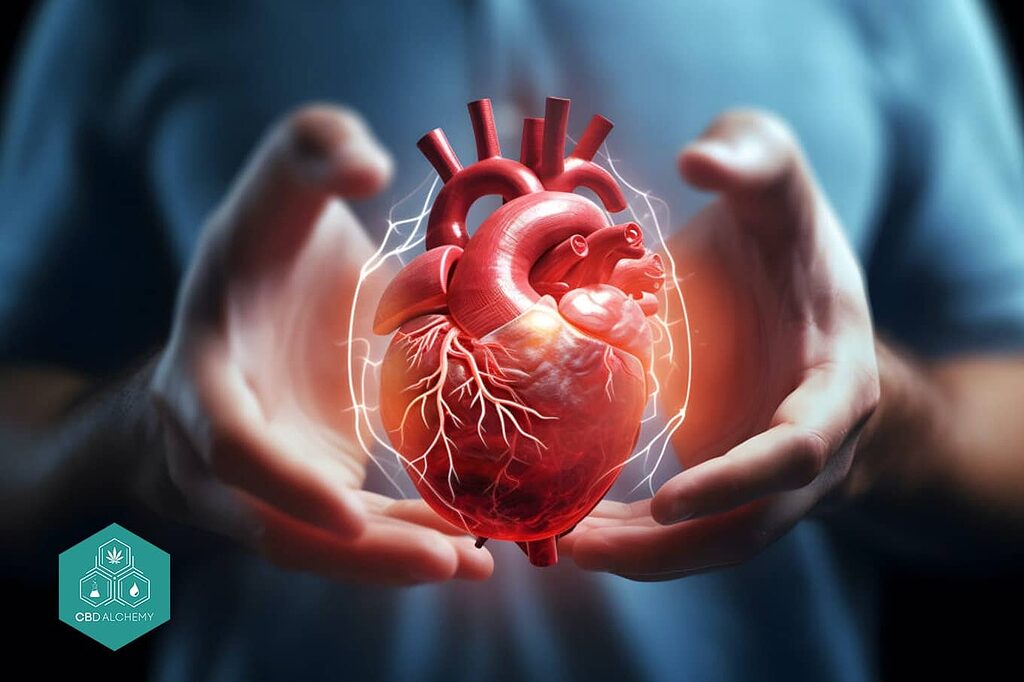
Cardiovascular Health
Flavonoids support heart health and help manage cardiovascular disease through various mechanisms:
Vascular Function
- Enhanced endothelial function
- Improved blood flow
- Reduced platelet aggregation
- Lower blood pressure
Lipid Metabolism
- Improved cholesterol profiles
- Enhanced fat metabolism
- Reduced oxidation of LDL
- Better triglyceride management
Neuroprotective Effects
Research demonstrates significant benefits for brain health:
Cognitive Function
- Enhanced memory retention
- Improved learning capacity
- Better focus and concentration
- Reduced age-related decline
Neurological Protection
- Reduced oxidative stress
- Lower inflammation
- Enhanced neuroplasticity
- Better blood-brain barrier function
Cancer Prevention and Treatment Support in Cancer Cells
Emerging research indicates multiple anti-cancer mechanisms, suggesting that flavonoids could be potential anticancer drugs:
Cell Cycle Regulation
- Apoptosis induction in cancer cells
- Cell cycle arrest
- Reduced proliferation
- Enhanced DNA repair
Metastasis Prevention
- Reduced angiogenesis
- Lower matrix metalloproteinase activity
- Decreased cancer cell invasion
- Enhanced immune surveillance
Cannabis Flavonoids: Nature’s Hidden Therapeutic Compounds
Understanding Cannabis-Specific Flavonoids
Cannabis plants synthesize unique flavonoid compounds called cannflavins, which belong to the class of prenylated flavonoids. These compounds, discovered in 1986, represent a significant advancement in our understanding of cannabis phytochemistry. Research has identified three distinct types: Cannflavin A, B, and C, each demonstrating remarkable therapeutic potential.
Cannflavin Distribution in Cannabis
Recent analytical studies have mapped the distribution of flavonoids throughout the cannabis plant. The highest concentrations appear in mature leaves, with significant amounts also present in flowers. Environmental factors, including light exposure, cultivation methods, and harvest timing, can significantly influence flavonoid content.
Therapeutic Mechanisms
Anti-inflammatory Properties
Cannflavin A demonstrates particularly potent anti-inflammatory effects through specific molecular pathways. Research indicates it inhibits prostaglandin E2 production more effectively than traditional anti-inflammatory compounds. This mechanism explains its potential in pain management and inflammatory conditions.
Antioxidant Activity
Cannabis flavonoids exhibit powerful antioxidant properties, protecting cellular structures from oxidative damage. These compounds work synergistically with cannabinoids to enhance overall therapeutic effects, particularly in neurological and inflammatory conditions.
Traditional Flavonoids Present in Cannabis
Quercetin Profile
Cannabis contains significant levels of quercetin, a well-studied flavonoid known for its diverse therapeutic properties. This compound demonstrates:
- Potent anti-inflammatory effects
- Enhanced bioavailability of other compounds
- Cardiovascular support mechanisms
- Immune system modulation
Kaempferol Benefits
Kaempferol in cannabis shows promising therapeutic potential through:
- Neuroprotective properties
- Anti-cancer mechanisms
- Metabolic regulation
- Enhanced cellular repair
The Enhanced Entourage Effect
Molecular Synergy
Cannabis flavonoids work in concert with cannabinoids and terpenes, creating what researchers call the “enhanced entourage effect.” This sophisticated interaction involves:
- Improved receptor binding
- Enhanced compound absorption
- Modified metabolic pathways
- Amplified therapeutic outcomes
Clinical Applications and Research
Current Evidence
Scientific studies demonstrate specific applications for cannabis flavonoids:
- Chronic pain management
- Inflammatory condition treatment
- Neuroprotective benefits
- Potential anti-cancer properties
Other Sources of Flavonoids
Flavonoids are widely distributed in nature and can be found in various plant-based foods and beverages. Some of the richest sources of flavonoids include:
Practical Applications and Therapeutic Protocols
Understanding proper dosing is crucial for maximizing flavonoid benefits:
General Population Guidelines
- Supplemental dosing: Based on specific compounds
- Timing considerations: Multiple daily doses
- Individual variation factors: Metabolism and health status
Special Populations
- Athletes: Higher doses during training periods
- Elderly: Modified absorption considerations
- Chronic conditions: Customized protocols
- Pregnancy/nursing: Professional guidance required
Quality Assurance
- Third-party laboratory testing
- Comprehensive compound profiling
- Contaminant screening
- Stability monitoring
Bioavailability and Absorption Optimization
Enhancement Strategies
Maximizing flavonoid absorption requires attention to several factors:
Dietary Combinations
- Fat-soluble compounds
- Vitamin C synergy
- Mineral cofactors
- Enzyme activators
Preparation Methods
- Temperature considerations
- Processing techniques
- Storage conditions
- Timing of consumption
Clinical Applications
Therapeutic Protocols
Inflammatory Conditions
- Initial loading phase
- Maintenance dosing
- Progress monitoring
- Adjustment protocols
Cognitive Enhancement
- Long-term supplementation
- Acute dosing strategies
- Combination approaches
- Performance tracking
Safety and Interaction Considerations
Safety and Toxicity of Flavonoids
Flavonoids are generally considered safe and well-tolerated, making them a popular choice for those seeking natural health solutions. However, like any bioactive compound, they can cause adverse effects when consumed in high doses. Common side effects may include gastrointestinal upset, allergic reactions, and interactions with certain medications.
The toxicity of flavonoids is influenced by several factors, including the specific type of flavonoid, the dose, and the duration of exposure. For instance, while quercetin is known for its anti-cancer properties, excessive intake can lead to toxicity. This dual nature underscores the importance of moderation and informed use.
Ongoing research continues to explore the safety and toxicity of flavonoids, aiming to establish clear guidelines for their use. By understanding these aspects, we can maximize the health benefits of flavonoids while minimizing potential risks.
Drug Interactions
Understanding potential interactions is crucial for safe implementation:
Common Medications
- Blood thinners
- Blood pressure medications
- Diabetes drugs
- Hormone therapies
Mitigation Strategies
- Timing separations
- Dose adjustments
- Professional monitoring
- Alternative approaches
Contraindications
Certain conditions require special consideration:
Medical Conditions
- Bleeding disorders
- Hormone-sensitive conditions
- Liver disease
- Kidney function issues
Preventive Measures
- Regular monitoring
- Dose modifications
- Alternative protocols
- Professional consultation
Implementation Guidelines
Daily Integration Strategies
Morning Protocol
- Green tea consumption
- CBD Alchemy product selection
- Breakfast optimization
- Supplement timing
- Incorporate citrus peel: Adding citrus peel to your breakfast can enhance flavor and provide limonene, which is beneficial for its applications in cosmetics, food flavoring, and cleaning products.
Afternoon Optimization
- Meal planning
- Activity coordination
- Supplement spacing
- Hydration consideration
Evening Regiment
- Relaxation support
- Sleep preparation
- Recovery optimization
- Next-day preparation
Future Perspectives and Emerging Research
Scientific Advancements
Current research is expanding our understanding of flavonoids in several key areas:
Novel Delivery Systems
- Nanoencapsulation technology
- Liposomal formulations
- Targeted delivery mechanisms
- Enhanced bioavailability methods
- Recent publications by John Wiley & Sons on flavonoid research
Therapeutic Applications
- Personalized medicine protocols
- Disease-specific interventions
- Preventive strategies
- Combination therapies
Industry Developments
The flavonoid market continues to evolve with new innovations:
Product Development
- Advanced extraction methods
- Standardized formulations
- Novel product combinations
- Improved stability solutions
Quality Standards
- Enhanced testing protocols
- Certification programs
- Transparency initiatives
- Sustainability practices
Regulatory Positions and Research
The regulatory landscape for flavonoids is shaped by various government agencies, ensuring their safe use in food and beverages. In the United States, the Food and Drug Administration (FDA) has established a list of flavonoids that are generally recognized as safe (GRAS). Similarly, the European Food Safety Authority (EFSA) has authorized specific flavonoids for use within the European Union.
Ongoing research, funded by organizations such as the National Institutes of Health (NIH), continues to investigate the health benefits and safety of flavonoids. This research aims to uncover new therapeutic applications and establish evidence-based guidelines for their use in disease prevention and treatment.
As our understanding of flavonoids deepens, these regulatory frameworks and research efforts will play a crucial role in ensuring their safe and effective use, paving the way for innovative health solutions.
Practical Recommendations
Optimizing Daily Intake
Dietary Strategy
- Rainbow eating approach
- Seasonal food selection
- Proper food combinations
- Preparation methods
Supplementation Guidelines
- Quality product selection
- Timing optimization
- Dose progression
- Monitoring protocols
CBD Alchemy Product Selection Guide
For Relaxation and Sleep
- Deep Amnesia (€4.50/g)
- Evening use
- Calming effects
- Sleep support
- Recovery enhancement
For Focus and Energy
- Blueberry Premium (€4.50/g)
- Daytime use
- Mental clarity
- Sustained energy
- Cognitive support
For General Wellness
- Amnesia Classic (€2.30/g)
- Daily maintenance
- Balanced effects
- Cost-effective
- Versatile usage
Expert Tips and Best Practices
Maximizing Benefits
Integration Strategies
- Start gradually
- Monitor responses
- Adjust as needed
- Maintain consistency
Quality Considerations
- Source verification
- Storage conditions
- Freshness factors
- Preparation methods
Conclusion and Future Outlook
The Path Forward
The science of flavonoids continues to evolve, revealing new potential applications and benefits. As research progresses, the integration of traditional knowledge with modern scientific understanding creates unprecedented opportunities for health optimization.
Key Takeaways
Scientific Understanding
- Complex mechanisms
- Multiple health benefits
- Synergistic effects
- Ongoing discoveries
Practical Application
- Personalized approach
- Quality product selection
- Consistent implementation
- Regular monitoring
Final Recommendations
- Begin with high-quality sources
- Choose premium CBD Alchemy products
- Select organic produce
- Verify supplement quality
- Monitor effectiveness
- Implement systematically
- Start with basic protocols
- Gradually increase complexity
- Adjust based on response
- Maintain consistency
- Stay informed
- Follow research developments
- Update protocols accordingly
- Engage with experts
- Share experiences
Looking Ahead
The future of flavonoid research and application holds tremendous promise. As our understanding deepens and technology advances, we can expect:
- More targeted applications
- Enhanced delivery systems
- Improved bioavailability
- Personalized protocols
CBD Alchemy remains committed to staying at the forefront of these developments, continuing to provide premium products that harness the full potential of both cannabinoids and flavonoids for optimal health outcomes.
Flavonoid FAQs: Everything You Need to Know
Understanding Flavonoids
What exactly are flavonoids, and why should I care about them?
Flavonoids are natural compounds found in fruits, vegetables, herbs, and plants like cannabis that act as nature’s protective agents. Think of them as the body’s natural defense system – they help protect our cells from damage, reduce inflammation, and support overall health. Just as these compounds protect plants from environmental stress, they can provide similar protective benefits for human health when consumed regularly.
How do flavonoids work in the human body?
When you consume flavonoid-rich foods or supplements, these compounds work like a sophisticated security system in your body. They neutralize harmful free radicals (unstable molecules that can damage cells), help reduce inflammation, support cardiovascular health, and even communicate with your cells to promote better health. Imagine them as microscopic bodyguards, constantly working to protect and optimize your body’s functions.
Dietary Sources and Daily Intake
What are the best food sources of flavonoids, and how can I include more in my diet?
The richest sources of flavonoids include:
- Dark berries (blueberries, blackberries, and raspberries) which provide powerful antioxidant flavonoids
- Citrus fruits (oranges, lemons, and grapefruits) containing unique heart-healthy compounds
Citrus fruits are also known for their aromatic scents due to compounds like limonene.
- Dark chocolate (70% cocoa or higher) offering stress-reducing and mood-enhancing flavonoids
- Green tea, which provides concentrated amounts of beneficial compounds
- Colorful vegetables like red onions, purple cabbage, and leafy greens
Think of eating flavonoids as painting with nature’s colors – the more colorful your plate, the more diverse your flavonoid intake will be.
How much should I consume daily to see health benefits?
While there’s no official recommended daily allowance, research suggests aiming for 400-600mg of total flavonoids daily for optimal health benefits. You can achieve this by including 5-7 servings of different colored fruits and vegetables in your diet, drinking green tea regularly, and occasionally enjoying dark chocolate. Remember, consistency matters more than occasional high intake – it’s better to maintain a steady daily consumption rather than sporadic large amounts.
Health Benefits and Therapeutic Effects
What specific health conditions can flavonoids help with?
Flavonoids have shown promising benefits for numerous health conditions:
- Cardiovascular health: They help maintain healthy blood pressure and support proper blood flow
- Brain function: Regular consumption may improve memory and reduce age-related cognitive decline
- Immune system: They enhance your body’s natural defense mechanisms
- Cancer prevention: Some flavonoids have shown potential in preventing cell damage that can lead to cancer
- Inflammatory conditions: They help reduce chronic inflammation throughout the body
Think of flavonoids as part of your body’s maintenance crew, constantly working to repair damage and optimize function.
How do flavonoids from cannabis differ from those in other plants?
Cannabis contains unique flavonoids called cannflavins, which work alongside CBD and other cannabinoids to enhance therapeutic effects. This special relationship, known as the “entourage effect,” makes cannabis-derived flavonoids particularly interesting for health applications. CBD Alchemy’s products are specifically cultivated to preserve these beneficial compounds, providing a more complete therapeutic profile than isolated compounds alone.
Safety and Optimal Usage
Are there any risks or side effects I should know about?
While flavonoids from food sources are generally safe, it’s important to understand that supplements may interact with certain medications. Think of flavonoids like a key that fits into various locks in your body – sometimes these keys might interact with other substances. Always consult with a healthcare provider before starting any supplement regimen, especially if you:
- Take blood-thinning medications
- Have hormone-sensitive conditions
- Are pregnant or nursing
- Have liver or kidney concerns
How can I maximize the benefits of flavonoids?
To get the most out of flavonoids:
- Combine different sources throughout the day
- Include healthy fats in your meals to improve absorption
- Consider timing your intake (some flavonoids may be better absorbed in the morning)
- Store flavonoid-rich foods properly to preserve their benefits
- Choose high-quality supplements and CBD products from reputable sources like CBD Alchemy
Research Studies Overview
Biosynthesis and Molecular Structure
This groundbreaking study revealed the complete biosynthetic pathway of cannabis-specific flavonoids (cannflavins A and B), demonstrating their unique prenylated structure. The research established the enzymatic processes involved in their formation and provided the first comprehensive map of cannflavin biosynthesis.
https://doi.org/10.1016/j.phytochem.2019.05.009
Anti-inflammatory Properties
A landmark investigation demonstrated that cannabis-derived flavonoids, particularly Cannflavin A, exhibit potent anti-inflammatory effects through prostaglandin E2 inhibition. The study showed these compounds are up to 30 times more effective than aspirin at reducing inflammation.
https://pubs.acs.org/doi/10.1021/acsomega.1c00318
Distribution and Bioavailability
This comprehensive analysis mapped flavonoid distribution throughout cannabis plant tissues, revealing that mature leaves contain the highest concentration of flavonoids (0.34-0.44%), while flowers showed lower but significant amounts (0.07-0.14%). The research provided crucial data on environmental factors affecting flavonoid synthesis.
https://doi.org/10.3389/fpls.2016.00019
Entourage Effect Mechanisms
A systematic review examining the interaction between cannabis flavonoids and other bioactive compounds demonstrated significant synergistic effects. The research provided evidence for enhanced therapeutic outcomes when flavonoids are present alongside cannabinoids and terpenes.
https://pmc.ncbi.nlm.nih.gov/articles/PMC10452568/
Safety and Clinical Applications
This comprehensive safety assessment established the general safety profile of cannabis-derived flavonoids and identified potential drug interactions. The study included bioavailability data and clinical guidelines for optimal therapeutic use.
https://pmc.ncbi.nlm.nih.gov/articles/PMC7720894/
